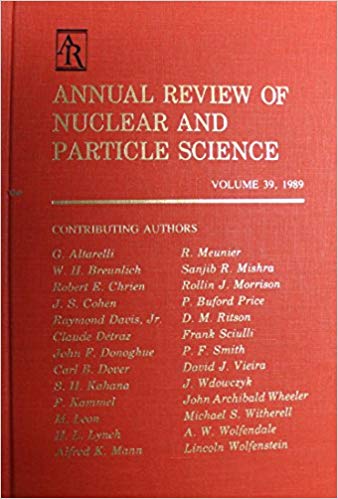重离子碰撞中的夸克和非限定夸克-胶子物质
IF 8.4
2区 物理与天体物理
Q1 PHYSICS, NUCLEAR
Annual Review of Nuclear and Particle Science
Pub Date : 2025-06-25
DOI:10.1146/annurev-nucl-121423-101041
引用次数: 0
摘要
在这篇文章中,我们介绍了在核-核碰撞中获得的夸克子结果的实验概述,重点是在大型强子对撞机上收集的数据。我们讨论了目前对在这种碰撞中产生的定义介质中的调和铵和底铵行为的理解,并将目前可获得的观测结果与最先进的理论模型的预测进行了比较。我们还讨论了悬而未决的问题,并解释了未来的重离子实验如何旨在澄清这些方面。本文章由计算机程序翻译,如有差异,请以英文原文为准。
Quarkonia and Deconfined Quark–Gluon Matter in Heavy-Ion Collisions
In this article, we present an experimental overview of quarkonium results obtained in nucleus–nucleus collisions with a focus on the data collected at the LHC. We discuss the current understanding of charmonium and bottomonium behavior in the deconfined medium produced in such collisions, and we compare the currently accessible observables with predictions from state-of-the-art theoretical models. We also discuss the open questions and explain how future heavy-ion experiments aim to clarify these aspects.
求助全文
通过发布文献求助,成功后即可免费获取论文全文。
去求助
来源期刊
CiteScore
21.50
自引率
0.80%
发文量
18
期刊介绍:
The Annual Review of Nuclear and Particle Science is a publication that has been available since 1952. It focuses on various aspects of nuclear and particle science, including both theoretical and experimental developments. The journal covers topics such as nuclear structure, heavy ion interactions, oscillations observed in solar and atmospheric neutrinos, the physics of heavy quarks, the impact of particle and nuclear physics on astroparticle physics, and recent advancements in accelerator design and instrumentation.
One significant recent change in the journal is the conversion of its current volume from gated to open access. This conversion was made possible through Annual Reviews' Subscribe to Open program. As a result, all articles published in the current volume are now freely available to the public under a CC BY license. This change allows for greater accessibility and dissemination of research in the field of nuclear and particle science.

 求助内容:
求助内容: 应助结果提醒方式:
应助结果提醒方式:


